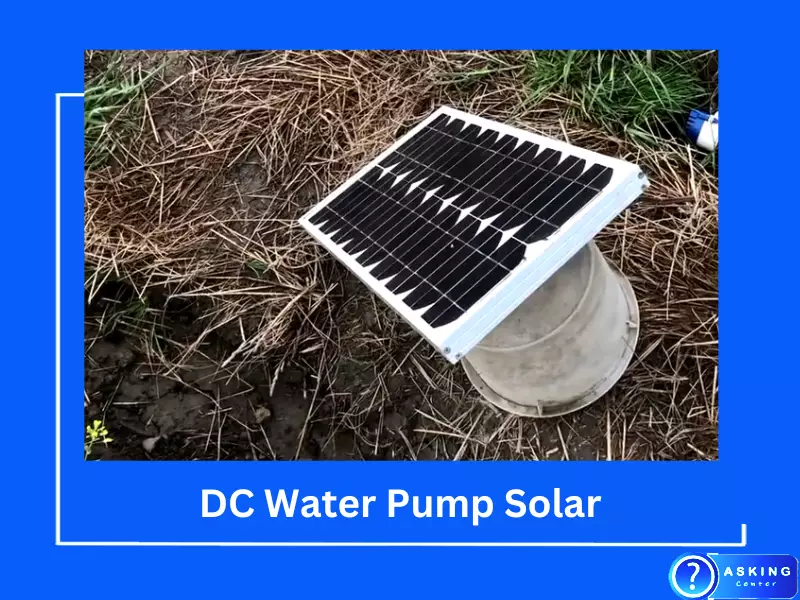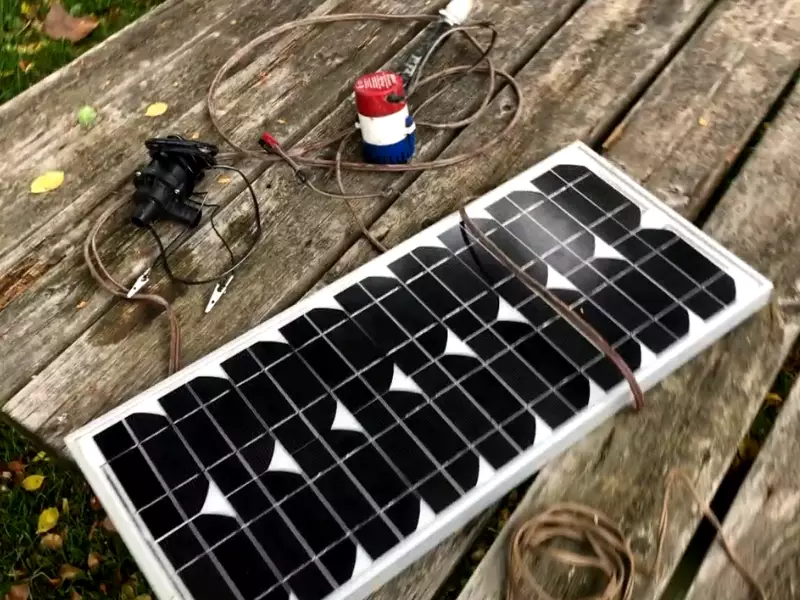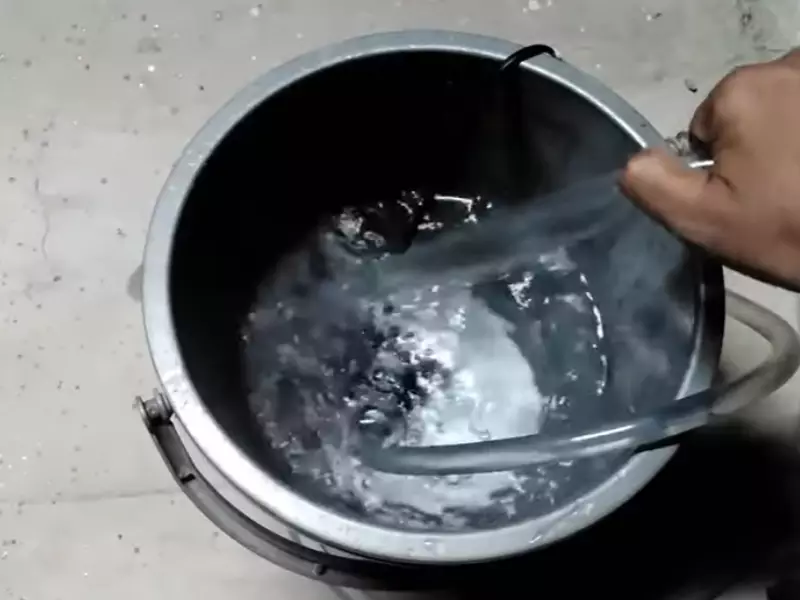Solar energy, a renewable source of power, is swiftly changing the way we generate electricity. Along with advancements in technology, we’re now able to use this energy to power a variety of devices, including DC water pumps. By utilizing solar power, we are reducing our carbon footprint and moving towards sustainable development, an aspect of critical importance in our world today.
DC water pumps, powered by solar energy, are an efficient and eco-friendly way to pump water for various uses, from irrigation to domestic purposes. The core of this process lies in the solar panel’s ability to convert sunlight into electricity, which powers the DC pump. The pump then draws water from a well, a stream, or another source and delivers it where needed.
To harness the benefits of this technology, it’s essential to understand how it all comes together. We will delve into the inner workings, the connection process, and all the other vital aspects of running a DC water pump with solar energy. Let’s start the journey of exploring this fantastic amalgamation of technology and nature.
Understanding the Basics
How a DC Pump Works
A DC (Direct Current) pump operates on electricity that flows consistently in one direction. The power source could be a battery or, in this case, a solar panel. When this electric current reaches the pump, it energizes the motor, which then drives the pump mechanism, thereby drawing water from the source.

How a Solar Panel Works
Solar panels comprise several photovoltaic cells. These cells capture sunlight and convert it into DC electricity. This generated electricity can power numerous devices, including DC water pumps, making them an excellent option for off-grid or remote applications where traditional electricity sources are unavailable.
Connection Between a DC Pump and a Solar Panel
Can You Connect a Solar Panel Directly to a Water Pump?
Yes, a DC water pump can be directly connected to a solar panel. However, this setup requires careful planning to ensure safety and efficiency. Let’s delve deeper into the process.
The Process of Connecting a DC Pump to a Solar Panel
Connecting a DC pump to a solar panel involves several steps. First, you need to determine the voltage requirements of your pump and ensure your solar panel can provide this power. Then, using suitable cables, establish a connection between the solar panel’s output and the DC pump’s input. Remember to use a fuse in the circuit for protection.
Safety Precautions While Connecting a DC Pump to a Solar Panel
Safety is paramount when dealing with electrical installations. Always turn off the system before making or breaking any connections. Wear safety gloves to prevent accidental contact with live wires. It is also recommended to engage a professional if you are unsure about any steps in the process.
The Efficiency of DC Pumps
Why DC Pumps Are Efficient with Solar Panels
DC pumps are ideal for use with solar panels due to their low power requirements and ability to work efficiently under varying power conditions. This allows them to operate even during periods of low sunlight, ensuring a consistent water supply.
Factors Affecting the Efficiency
Several factors influence the efficiency of a solar-powered DC pump, including the amount of sunlight available, the angle and orientation of the solar panel, and the size and efficiency of the pump.
How Many Solar Panels It Takes to Run a Water Pump
The number of solar panels required to run a water pump depends on the pump’s power requirements and the output of the solar panels. If a pump requires 200W and a solar panel produces 100W, you will need at least two solar panels to power the pump.

Power Requirements for a DC Water Pump
The voltage requirement for a DC water pump varies based on its design and intended use. Typically, small pumps for home or garden use require 12V or 24V, while larger pumps for industrial use may require higher voltages. It’s crucial to know your pump’s voltage requirement before connecting it to a power source, such as a solar panel.
How Many Batteries Are Needed with a Water Pump?
The number of batteries needed depends on the pump’s power consumption, the operation hours, and the battery capacity. For instance, if you have a 12V water pump with a power consumption of 10A per hour and you need it to operate for 5 hours per day, you’ll require a battery with a capacity of at least 50Ah to sustain it for a day without sunlight.
Wiring Solar Panels for Water Pumps
Process of Wiring Solar Panels for the Water Pump
- Determine Your System’s Voltage: Match the voltage of the solar panel system with the voltage of the pump.
- Connect Solar Panels in Series or Parallel: Depending on the power requirement, connect solar panels in series to increase voltage, or in parallel to increase current.
- Connect Solar Panels to the Charge Controller: This device manages the power going into the battery bank and protects batteries from overcharging.
- Connect the Battery Bank to the Charge Controller: Make sure the battery bank voltage matches the system voltage.
- Connect the DC Pump to the Battery Bank: Use a switch between the battery bank and pump for easy control.
Precautions While Wiring Solar Panels for a Water Pump
Always ensure all devices are turned off before starting the wiring process. Use appropriate wiring and connectors, and secure all connections properly. Employ fuses or circuit breakers for safety.
Disconnecting the DC Pump from the Solar Panel
Steps to Disconnect the DC Pump from the Solar Panel
Disconnecting the pump involves reversing the connection process.
- Turn off the pump and then the solar panel.
- Disconnect the pump’s wires from the solar panel.
- Ensure all wires are safely tucked away to prevent accidental contact.
Safety Measures During Disconnection
Wear safety gloves and ensure the system is off before starting. Don’t pull on the wires when disconnecting; instead, gently remove the connectors.

Converting an Electric Water Pump to Solar
Why Convert an Electric Water Pump to Solar
Converting an electric pump to solar offers multiple benefits like reduced electricity bills, lower carbon footprint, and operation in areas without grid access.
Step by Step Guide on Converting Your Electric Water Pump to a Solar Panel
- Understand Your Pump’s Power Requirements: Check the voltage and current requirements of your pump.
- Choose the Right Solar Panel: Ensure the solar panel can meet the pump’s power needs.
- Install a Charge Controller and Battery Bank: These will ensure the pump can operate when sunlight isn’t available.
- Connect the Pump to the Solar System: Connect your pump to the battery bank or directly to the solar panel if it doesn’t require a battery.
Running a Water Pump on the Inverter
Feasibility of Running a Water Pump on the Inverter
Yes, it’s feasible to run a water pump on an inverter. However, you must ensure the inverter can handle the pump’s power demand, and the battery bank can provide enough power for the required duration.
Steps to Connect a Water Pump to an Inverter
- Check the power and voltage requirements of the pump and ensure your inverter can meet these.
- Connect the inverter to the battery bank.
- Connect the DC pump to the inverter, ensuring all connections are secure and correctly wired.
Ensure to switch off all devices when connecting or disconnecting them to avoid potential electrical hazards.
Direct Connection of a DC Motor to a Solar Panel
Possibility of Connecting a DC Motor Directly to a Solar Panel
Yes, you can connect a DC motor directly to a solar panel, provided the solar panel can deliver the required voltage and current. However, it’s worth noting that without a battery as a buffer, the motor will only run when there is enough sunlight.
Steps to Connect a DC Motor Directly to a Solar Panel
- Determine the voltage and current requirements of your DC motor.
- Make sure your solar panel can deliver these requirements.
- Connect the DC motor directly to the solar panel using suitable connectors and wires.
Always ensure the system is off during connection and disconnection to prevent potential electric shock or damage to components.
FAQs
Can a DC water pump run without a battery?
Yes, a DC water pump can run without a battery if it’s connected directly to a solar panel. However, without a battery, the pump will only operate when there is sufficient sunlight.
How much sunlight does a solar panel need to run a water pump?
The amount of sunlight required depends on the power output of the solar panel and the power demand of the water pump. In general, solar panels perform best under full sunlight, typically in the middle of the day.
Is a solar-powered DC water pump suitable for all types of wells?
A solar-powered DC water pump can be used for various types of wells, including bore wells and open wells. However, the pump’s capacity and power requirements need to be considered based on the depth and yield of the well.
Conclusion
Adopting solar-powered DC water pumps is a significant step towards sustainable living. These systems are not just eco-friendly but are also efficient and versatile, serving a variety of needs from household use to irrigation.
While there are steps to be followed and considerations to be made, the benefits certainly outweigh the effort. With the knowledge acquired from this comprehensive guide, you are now equipped to harness the power of the sun for your water pumping needs.
